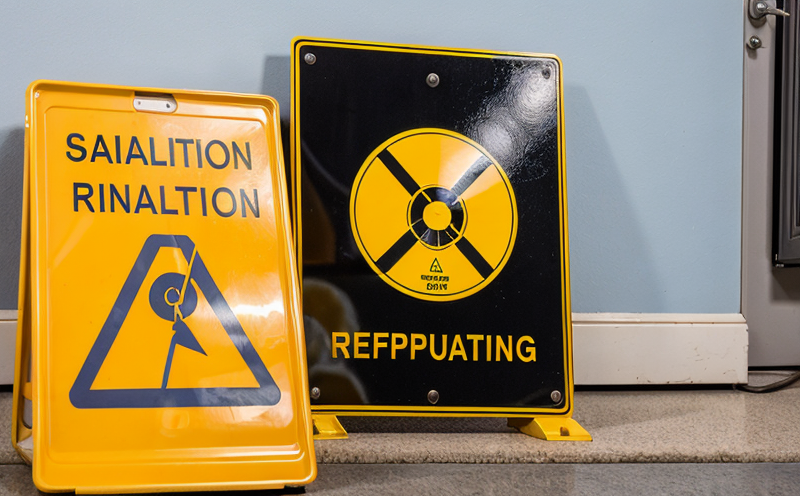ASTM E1820 Fracture Toughness Testing for Safety Standards
The ASTM E1820 standard is a critical tool in the evaluation of material toughness, particularly under conditions where brittle fracture may occur. This test is widely used across sectors such as nuclear power, aerospace, and automotive manufacturing to ensure that materials meet stringent safety standards.
Fracture toughness testing evaluates how a material will resist sudden crack propagation when subjected to stress. The primary parameter of interest in this test is the KIC value (critical stress intensity factor), which quantifies a material's resistance to fracture under dynamic loading conditions.
The ASTM E1820 standard specifies several methods for conducting these tests, including:
- Standard compact tension specimens (CCTS)
- Modified notched three-point bend specimens
- Square notch bend specimens
These methods are chosen based on the specific geometry and dimensions of the material being tested. The testing process involves applying controlled stress to a specimen until it fractures, and then measuring the critical stress intensity factor.
The importance of ASTM E1820 in radiation and nuclear testing cannot be overstated. In these high-stakes environments, materials must withstand extreme conditions without compromising safety. For instance, in nuclear power plants, even small cracks can have catastrophic consequences if they propagate through critical components. By ensuring that materials meet the stringent requirements outlined in this standard, manufacturers can significantly reduce the risk of accidents and improve overall system reliability.
Another key application is in aerospace, where lightweight yet strong materials are essential for both performance and safety. The space industry demands high levels of durability and resistance to environmental stressors such as thermal cycling and radiation exposure. ASTM E1820 provides a standardized approach to assessing these properties, ensuring that aircraft parts meet the highest standards.
Furthermore, the automotive sector is increasingly incorporating advanced materials into its designs for improved efficiency and safety. In this context, fracture toughness testing helps identify potential weaknesses in newly developed materials before they are deployed widely. This proactive approach not only enhances product quality but also aligns with broader industry goals of sustainability and innovation.
For R&D engineers, ASTM E1820 offers valuable insights into material behavior under various loading conditions. By understanding how different factors affect KIC, they can refine their designs to better suit specific applications. Additionally, compliance officers benefit from this standard as it provides clear guidelines for ensuring that materials used in their products comply with relevant regulations.
In summary, ASTM E1820 fracture toughness testing is an indispensable tool for maintaining safety and quality across multiple industries. Its rigorous methodologies ensure consistent results, enabling manufacturers to produce reliable products that meet the highest standards of performance and safety.
Applied Standards
| Standard Number | Title |
|---|---|
| ASTM E1820-23 | Standard Test Method for Fracture Toughness by Compact-Tension Specimen Testing |
| ASME Section III, Subsection NF | Nuclear Quality Assurance |
| IAEA Safety Standards Series No. SF-1 | Radiological Protection in Nuclear Power Plants |
| Standard Number | Title |
|---|---|
| ISO 9037 | Determination of Fracture Toughness by the Compact-Tension (CT) Specimen Test |
| IEC 62844-1 | Nuclear Power Plants - Safety Requirements for Quality Assurance Programs |
Why Choose This Test
- Precision measurement of critical stress intensity factor (KIC) ensuring material integrity under dynamic loading.
- Comprehensive evaluation of material toughness, essential for applications requiring high reliability and safety.
- Regulatory compliance with industry-recognized standards like ASTM E1820, ASME Section III, and IAEA SF-1.
- Supports advanced research and development projects by providing reliable data on material behavior under stress.
- Promotes consistent quality across manufacturing processes through standardized testing procedures.
International Acceptance and Recognition
- The ASTM E1820 standard is widely accepted in countries with robust nuclear industries, including the United States, France, Japan, and Russia.
- Aerospace companies globally rely on this test for certifying materials used in spacecraft and aircraft components.
- Automotive manufacturers worldwide use ASTM E1820 as part of their quality assurance programs to ensure product safety and reliability.
- The standard is recognized by international regulatory bodies such as the International Atomic Energy Agency (IAEA) and the International Organization for Standardization (ISO).
In conclusion, the ASTM E1820 fracture toughness test stands out due to its precision, reliability, and broad acceptance in key industries. Its widespread use underscores its importance in ensuring product safety and regulatory compliance.





